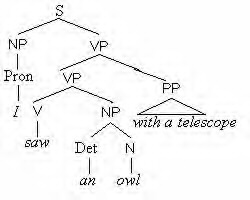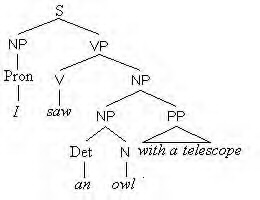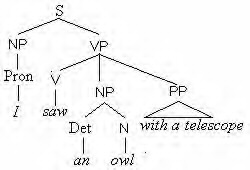Instructions
This is an open book, open notes, take-home exam. You may consult any of the course materials (and other outside materials if you wish, though they will probably not be as much help) in figuring out the answers to the questions. However, you may NOT discuss the exam with ANYONE, whether they are taking the class or not. If you have any questions, direct them to me, either in my office hours, or by e-mail (smalamud@sas.upenn.edu). I will not answer questions that are too specific and would give you an unfair advantage in taking the exam, but will be happy to give clarification on what is meant by a question. If you are at all uncertain about what sort of answer I am looking for, think you've found an error or typo, please ask me about it.
Exams should be typed (speak to me if this is a problem) and are due by 5pm, Thursday, June 24th at the very latest. Late exams cannot be accepted due to the lack of time before grades are due. Exams can be left in my mailbox in the linguistics department, Room 619 Williams Hall or submitted electronically as an e-mail attachment in .pdf, postscript or MSWord (.doc) format.
The exam consists of two parts: very-short-answer questions, and
short-answer questions. You must answer all ten questions in the first
part (these are worth 2 points each, for a total of 20 points). The second
part contains four obligatory questions. Each question is worth 20 points.
There are two extra-credit questions, worth 10 points each, making the
best possible score 120 out of 100. Read the questions carefully and make
sure you answer every part of each!
PLEASE NOTE: I am NOT looking for
essay answers in the second part. I want short-paragraph answers (e.g.,
when I ask you to 'discuss' something, the discussion should be one or two
sentences only). Don't make it harder than I want it to be :)
Again, if you have any questions or are uncertain about any of this, talk to me or e-mail me. Good luck!
Part 1: Very-short-answer questions
[20 points total]
1. Why is the sentence I like flowers except for cats semantically strange?
- Because cat is a hyponym of flower.
- Because cat is not a hyponym of flower.
- Because cat and flower stand in a metonymic relation.
- Because everybody likes cats.
2. Which one of these statments is not true of inflectional morphology?
- It creates new forms of the same word.
- It has the potential to change the part of speech.
- It often expresses grammatical features and relations between words in a sentence.
- It is expressed, in English, by means of suffixes only.
3. Which one of the following sounds does not belong to the same
natural class as the others?
[ t s z l d m n ]
4. Give a minimal pair in English for the sounds /p/ and /b/.
5. a. Which of the following trees corresponds to the pictured
interpretation of the following ambiguous sentence: I
saw an owl with a telescope.
6. Identify the most likely problem afflicting a person whose
utterances are typically like the following:
This
is getting in here and that's the getting around here, this one and one
with this one. And this one, and that's it, isn't it? I don't know what
else you'd want.
- Wernicke's aphasia
- Broca's aphasia
- Too much coffee
- Not enough coffee
7. Give phonetic transcription for the word integrability and syllabify it.
8. Give a morphological analysis for the word disqualifying. That is, split this word up into the morphemes it is made out of, and give a step-by-step description of how these morphemes are put together, noting the part of speech of each intermediate word. The order in which you put the pieces together should reflect the meaning of the word.
9. Which of the following is NOT among the morphemes you identified in the last question?
- a bound derivational morpheme
- a bound inflectional morpheme
- a free function morpheme
- a content morpheme
10. Which Grician Maxim is violated by the following warning, which
allegedly appeared on the package of Nytol sleep aid?
Warning: May cause drowsiness. (from Linguistic Humor
page)
How does the warning violate this Maxim?
Part 2: somewhat-larger questions
[80 points total]
1) The human vocal tract
The human vocal tract is of such central importance to spoken language that we've discussed it in three different lectures. Describe its linguistic relevance, discussing how it is different from the vocal tracts of our closest animal relatives, what advantages and disadvantages are associated with these adaptive differences, and the relevance of vocal tract maturation to the language and language acquisition of children.
2) Sound correspondences
Recall from the lecture on language change that the way we determine whether two languages are related is by seeing if we can come up with a series of regular sound correspondences between related words in the two languages. Thus we saw, for example, that English and German are related because, among other things, English initial [t] corresponds to German [ts] and English initial [p] corresponds to German [pf]. In the table below you will find ten basic words from four invented languages, alongside their English translations. Which languages are related to each other? Hint: each of the four is related to only one of the other three, i.e. there are two pairs. Give all of the sound correspondences for each pair of related langauges (you can leave out the sounds on which two related languages agree, e.g. if one language has [l] wherever the other has [l]). Remember to handle the vowels as well as the consonants, and watch out for chance similarities! Just because one word happens to sound the same in two languages does not necessarily mean they are related. Rather, the languages must show a consistent and regular pattern of sound correspondences through a large number of words.
| English | Lang. A | Lang. B | Lang. C | Lang. D |
| hand | pen | feno | fæna | feno |
| foot | kid | mogo | maka | xidu |
| water | lab | baud | put | labo |
| man | tik | gaibi | kipe | θixi |
| woman | mat | mod | mat | maθe |
| bone | bok | lure | loræ | boxa |
| food | sid | sid | set | sidu |
| eye | nil | nailu | nilo | nilo |
| earth | veg | dosau | tasu | vega |
| sky | kitop | rinai | reni | xiθofa |
3) The critical period
One of the most important things we've learned about child language acquisition is the notion of a critical period, during which acquisition must take place in order to be guaranteed to succeed completely. Explain the critical period, discussing when it is, what evidence we have for its existence and what evolutionary reason there might for such a thing, where the brain actually gets worse at learning something over time rather than better.
4) Sociolinguistics
What are the two forms of prestige that influence linguistic change? Provide definitions for the two forms of prestige, and an example of a linguistic change influenced by each form. For each example, discuss what is the evidence that this change is influenced by the corresponding form of prestige.
EXTRA-CREDIT [20 points total]
1) Language in the brain
Like the vocal tract, the human brain has evolved to make modern language possible. Discuss how it is different from those of our ancestors and closest relatives, mentioning the both the advantages and the disadvantages that come along with the changes. Also, briefly discuss the specific parts of the brain that seem to be involved in language, what sorts of linguistic abilities are located in each, and what we have learned in this area from language impairments resulting from brain damage.
2) Signed and written language
One might think that writing and sign language are roughly equal in being alternative ways to convey spoken language. However, this is not the case. It has been stressed repeatedly in the lectures and the readings for this course that sign languages are in every respect full-fledged human languages in and of themselves, while on the other hand we've said that "Writing is not language, but merely a way of recording language by visible marks." Why is this? Give three arguments in favor of taking sign languages to be real human languages and three arguments in favor of taking writing to be secondary to actual language. A cautionary note: you will probably not be able to use the same arguments for both. That is, don't expect to be able to say something like "sign language is real language because it has property X, but writing is not real language, because it does not have property X".



